This spring, as Ervie Glick continued his daily work of battling invasive species in Park Woods, he was delighted to see on the forest floor wildflowers blooming in dappled sunlight.
Rue anemones, Virginia bluebells, May apples, and just this week, Jack-in-the-pulpit have all caught his eye — and the notice of the many local walkers and runners who regularly circumambulate paths in the 13-acre woods on Eastern Mennonite University’s campus.
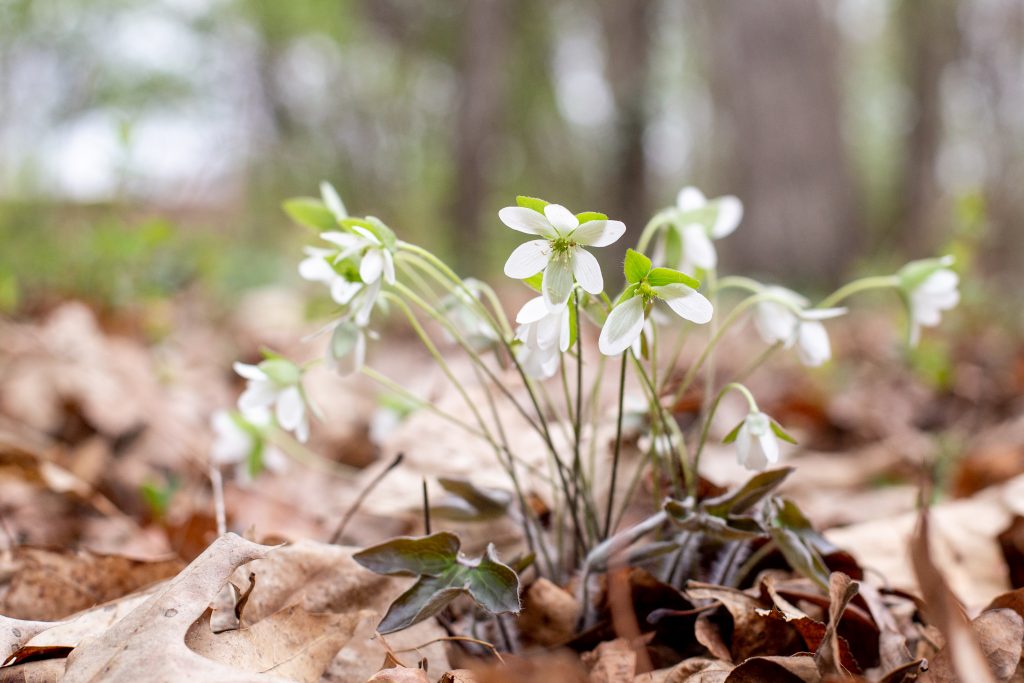
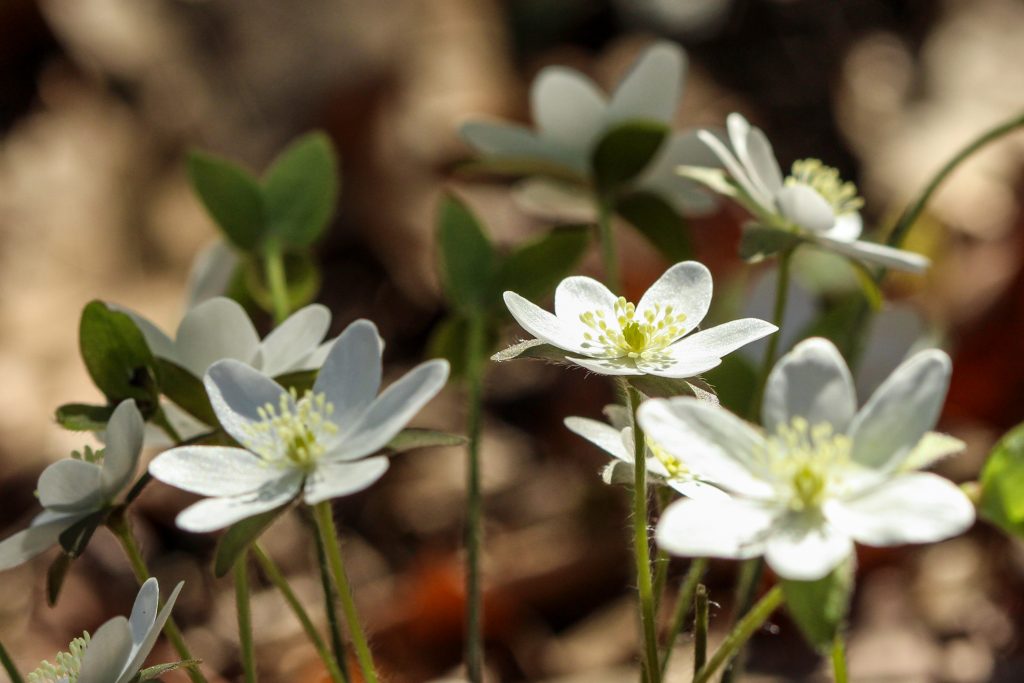
As a side note, I discovered this bit of nature-news when two fellow runners were discussing a recent text exchange. One, a neighborhood resident and regular visitor to Park Woods, had sent photos of the flowers with an identification request to the other friend, a Master Naturalist. Hearing this, of course, sparked a field trip down to the woods with photographer Rachel Holderman (and web strategist Laura Lehman, a native plants specialist by marriage came along as well).
Glick, professor emeritus of German at Eastern Mennonite University, is among a core group of volunteers working for the past year to remove invasive species (one would say he is first among that core group, but he would demur such attention).
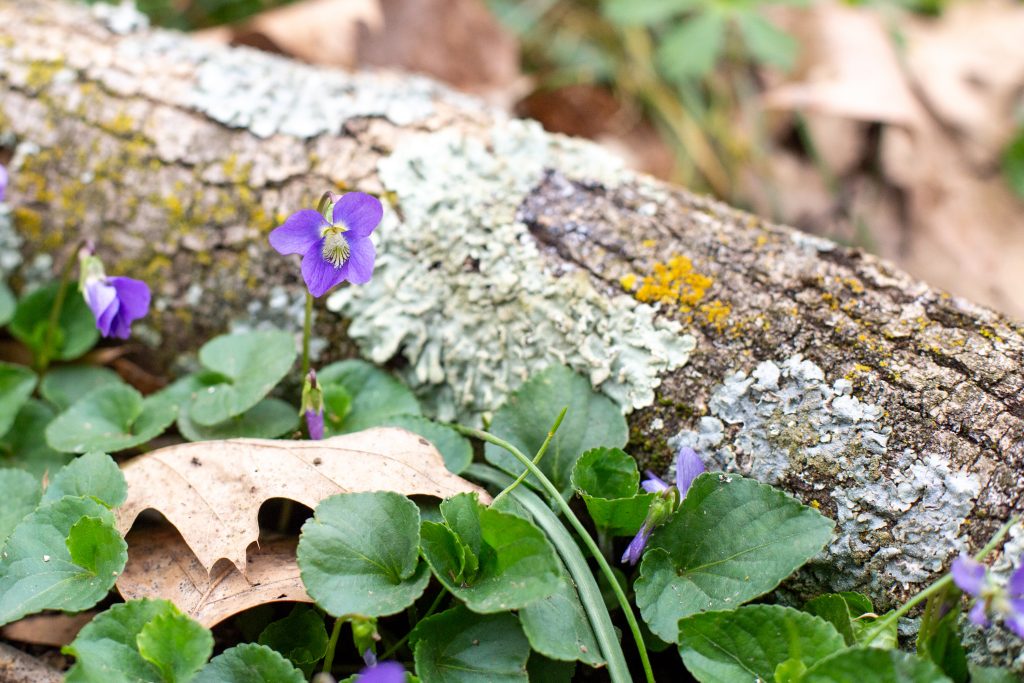
The woods have also received attention from several volunteer work parties and from environmental sustainability classes. Read more here and watch a timelapse video here.
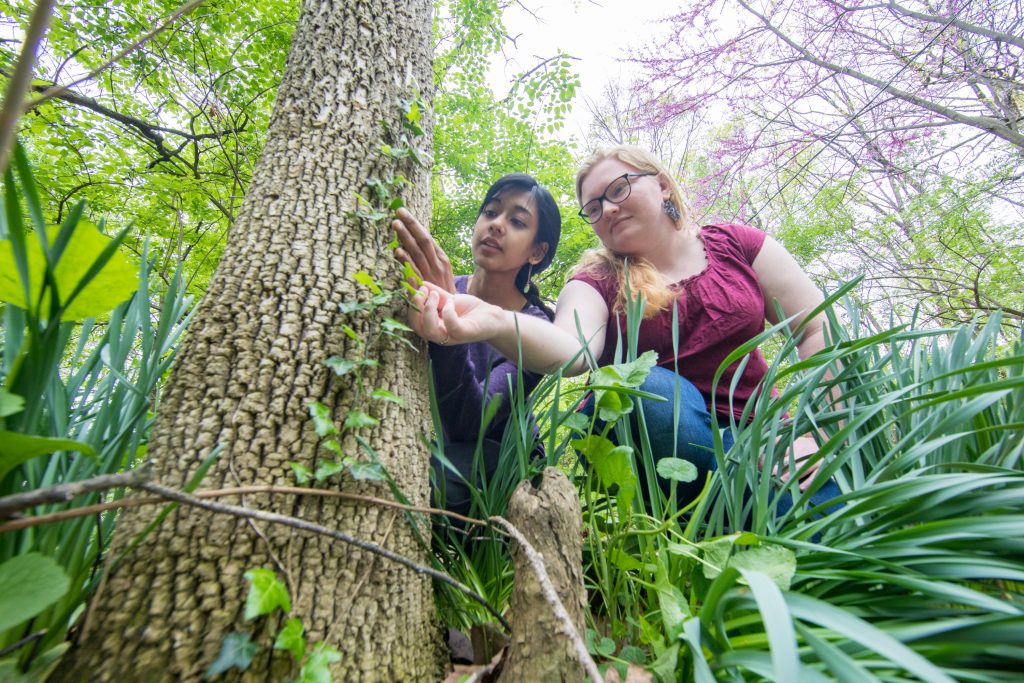
That attention has resulted in a rare botanical flourishing.
“These dear forest gems have been essentially dormant for up to 70 years, hidden under the canopies of privets and bush honeysuckles,” Glick wrote in a recent email.
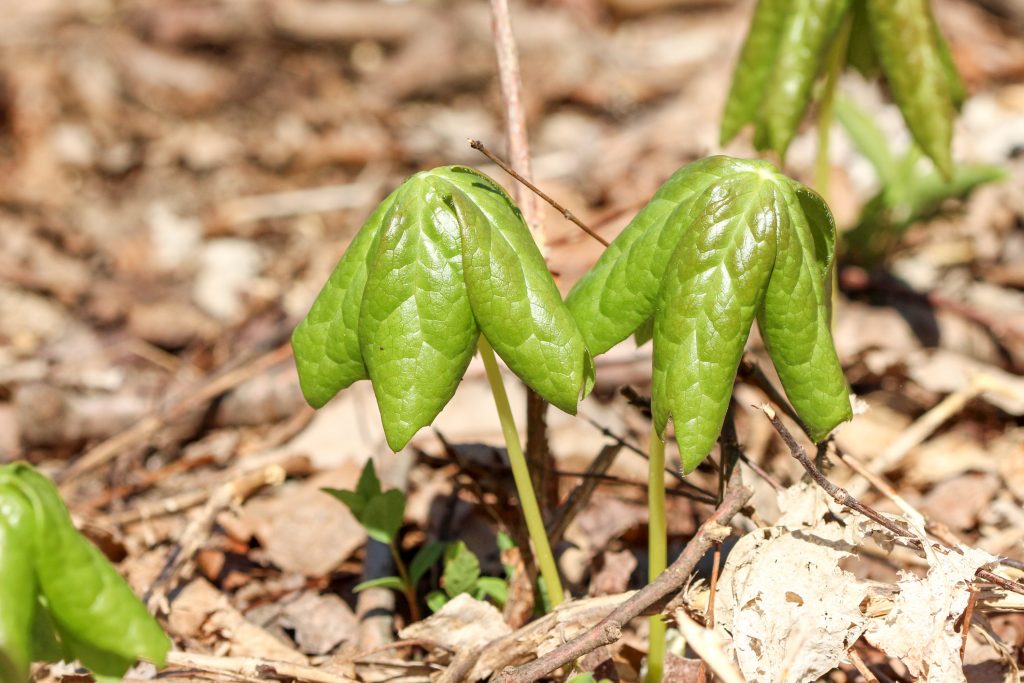
The two species of aggressive non-native invasive plants have been propagated over the years by bird droppings that contained the seeds of nearby ornamental plants. English ivy is also strangling many of the trees. The volunteers have collaborated with the EMU biology department, which provided training in identification, and the physical plant crew, which has helped to remove ash trees killed by the ash borer. Oaks, hickories, maples “and other desirable forest trees” are left to flourish.
Glick, who works in the woods daily, says trillium, wild geraniums, bloodroot, garlic mustard, tiger lilies and a host of other species can also be found in the woods.
Two walkers recently stopped to tell him of memorable times as then-EMC students living in married housing trailers at the edge of the woods.”One recalled with nostalgia of having taken her twin babies for walks in the woods when they looked like our woods do now,” Glick said.
Park Woods volunteers work daily, practicing safe social distancing. If you’d like to join, BYOL — Bring Your Own Loppers — and a stout pair of gloves.
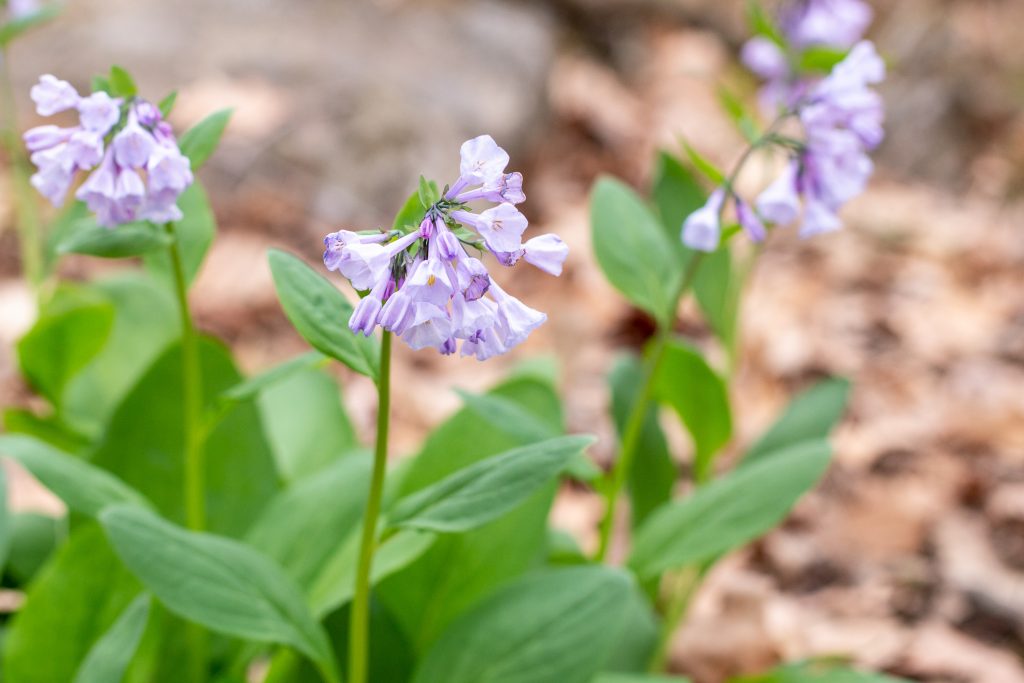
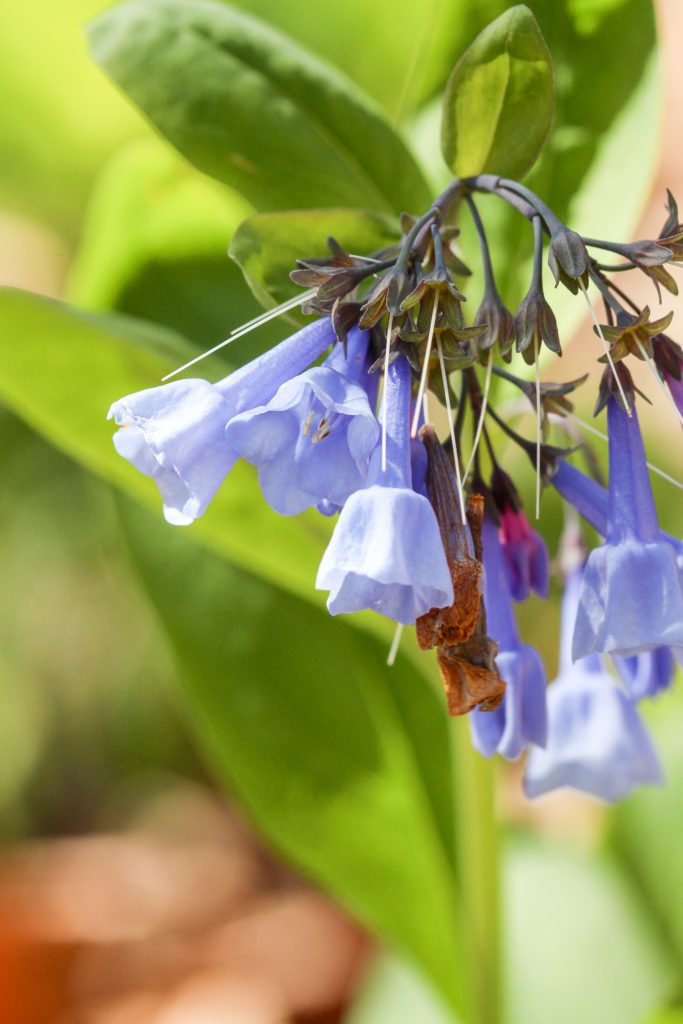
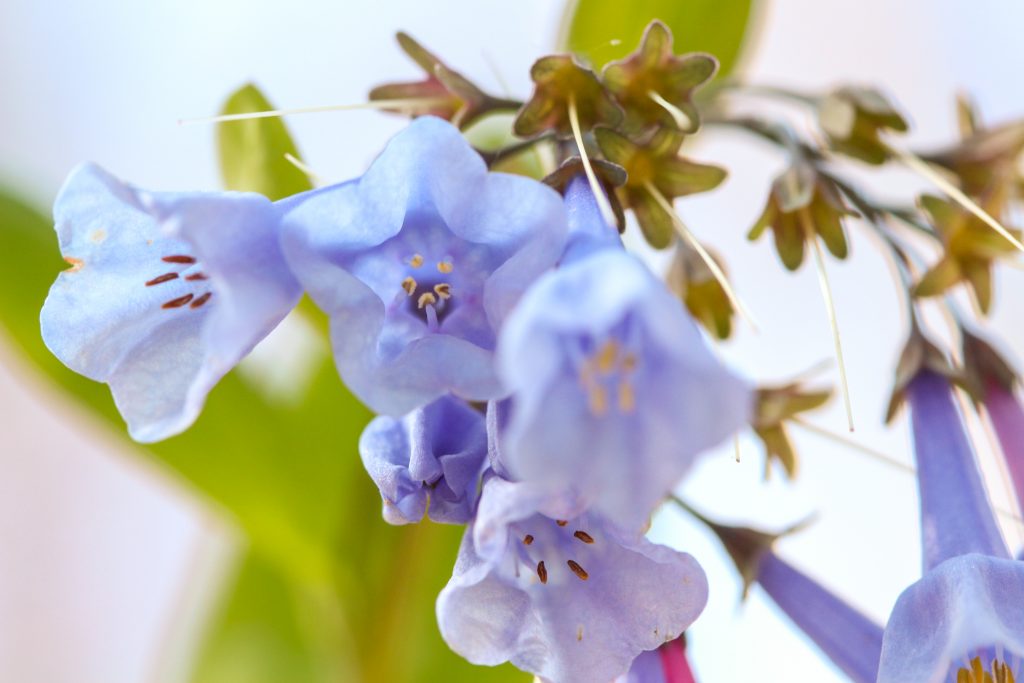
I have noticed that the Mayapples are coming out in numbers I haven’t seen before! I know it’s been a ton of hard work, and I’m thankful for the time that Ervie and Wengers/grounds crew have put in as Park Woods makes the grueling path to recovery as a flourishing forest!
Good work, nice wildflowers, and beautiful photos. However the top photo (and perhaps the second) is of Hepatica rather than Rue Anemone. It’s nice to see Kenton Brubaker’s hard work at re-introducing these wildflower species is bearing fruit … so to speak.
This effort is so wonderful to hear. I spent many an hour while a work study student at EMU around 2000 working with and under the direction of Professor Emeritus Kenton Brubaker doing these same tasks of removing invasives plant species in Park Woods. Kenton was a wonderful teacher and storyteller as we worked, removing invasive seed sources, but planting plenty of seeds of passion in my own heart for conserving native spaces. May the current process be repeating this vision in many others to come! Invasive species are tenacious by definition, but so are creation’s caretakers.
Clair is right about the Hepatica. I have not seen this one but the basal leaves would identify it. They are not on the photo. I’ll have to have Ervie show this to me! Betty Deputy had several Hepatica in her little planting but they seem to be gone. I think the Mayapple is about to bloom but it is not yet May! Shooting star is trying to bloom but not when I looked last week, it has been in bud for some time. I pull out a lot of the garlic mustard I encounter on my walks but it will soon take over on the southeast corner of the woods.
Kenton
Here’s a thrifty way to give purpose to weeding garlic mustard: use the leaves to make pesto–it substitutes for the basil. Quite tasty and can be used as a sandwich spread as well as the traditional pasta sauce.
I have been pulling mustard garlic form my” little woods” this spring and feeding it to my steer who loves it.
Paul Hoover
It’s good to hear that a few others are equally concerned about the flourishing garlic mustard in this woods. It could take years to remove it as the first year of growth is less notable since it does not send up a stalk with flowers. We’ve enjoyed garlic mustard pesto! This evening there was a pair of Mallard Ducks hanging out in a wet area.
The first may apple blossoms are appearing. Two flourishing sets of Solomon’s seal are marked by orange traffic cones to the north of the cabin. Watch for their string of pearls. Jack-in-the-pulpits are plentiful, spreading the Good News of the Gospel. And the shooting stars are demonstrating just how they got their name, flashing from on high. Don’t miss the show!
Ervie